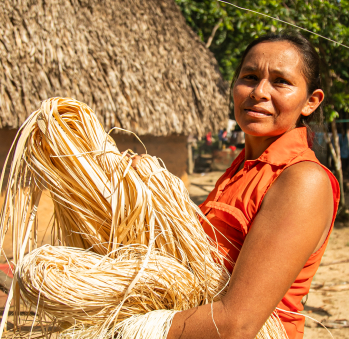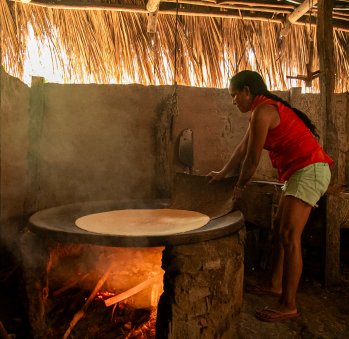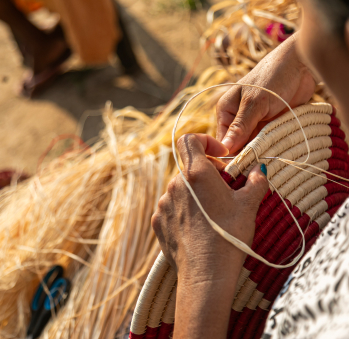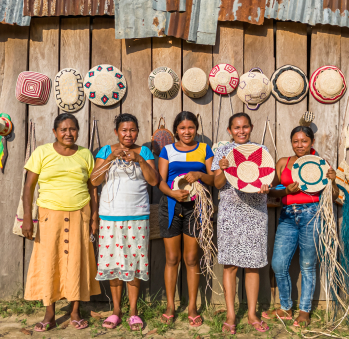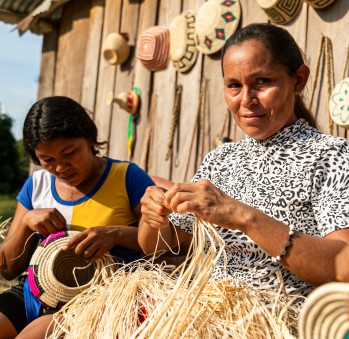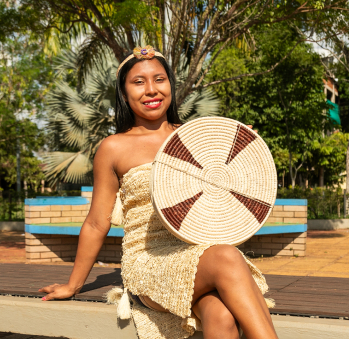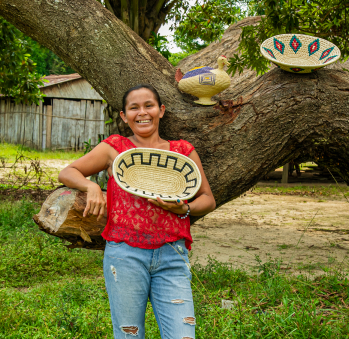Yazmín Briceño
Workshop: Artesana Cumariana
Craft: Cestería y tejeduría
Trail: Vichada Route
Location: Cumaribo, Vichada
SCHEDULE YOUR VISIT
Comunidad Cumariana, Resguardo Aiwa Kuna Tsepajibo, Cumaribo, Vichada
3114701228
Being led by Yazmín Briceño into the universe of the Sikuani people, an indigenous group residing in the vast territory of Vichada, is an extraordinary privilege. She speaks fluently and passionately about what it means to belong to the Cumariana community in Cumaribo, Colombia’s largest municipality, covering an expanse of 65,000 square kilometers. Echoing her people’s words, she understands that she is part of a unified reservation dedicated to preserving their traditions, which include their artisanal crafts—an integral aspect of their identity. She reveres her grandmother, Beatriz, and her mother, María Ortiz, for imparting the essence of Sikuani women by teaching her the art of weaving. She continues their legacy, passing it on to her own daughters. Altogether, these women are the threads binding one generation to another.
Yazmín vividly recalls her menarche and the four months she spent secluded. Under the guidance of her grandmother Beatriz, she learned the significance of weaving and its pivotal role in creating items fundamental to her future home: the 500-lap chinchorro hammock she would share with her husband, the clay tinajas for celebrating water, the cumare palm and moriche baskets for storing conuco or sebucan harvests—special baskets used in rendering the poisonous bitter cassava edible for casabe and mañoco, vital to their sustenance.
Though she laughs recalling how her skin paled and her body thinned during those months, those memories are cherished. All attention was devoted to teaching her. She reminisces about observing her grandmother intricately weaving moriche and cumare fibers, and the meticulous process of extracting cumare’s veins without being pricked by its large thorns. She witnessed her grandmother dyeing fibers using broad teca leaves, yellow ginger, or turmeric. Her grandfather, Juan, would return home late, laden with cumare shoots harvested from the rainforest since early morning. They taught her the symbolism behind each pattern woven into baskets, and she continues to recount these tales to anyone curious to hear them.
In these baskets resides an entire world—a world where small fish swim in bountiful rivers, mammal pawprints mark the damp earth, the sacred tree of life, upholding the origins of their culture, is depicted, and shamans construct labyrinths to elude their adversaries. None of the 32 patterns woven into baskets are arbitrary; they are a geometric translation of their cosmogony—a means of preservation through portrayal and storytelling.
At the culmination of her seclusion, this girl transformed into a woman was welcomed with a celebration—an acknowledgment of her readiness for the life ahead. Life further introduced her to crochet. Recognizing her aptitude for needlework, she found joy in crafting dresses for her daughters. Presently, she combines weaving, the legacy of her ancestors, with needlework, resulting in baskets and vessels that exude profound beauty. Jazmín acknowledges this and intends to continue showcasing her landscapes and beliefs for a long time to come.
Craft

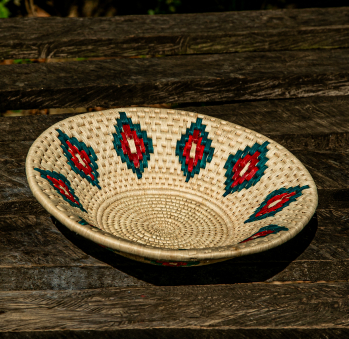
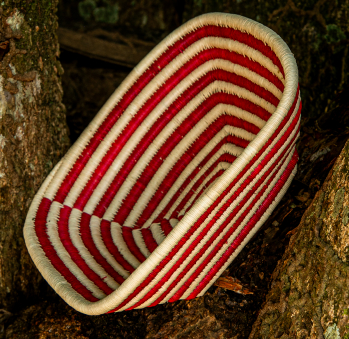

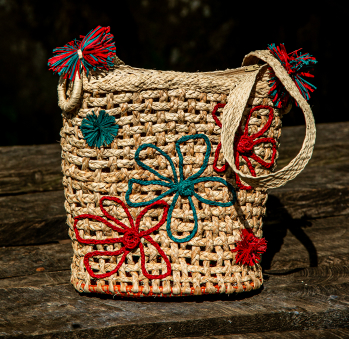
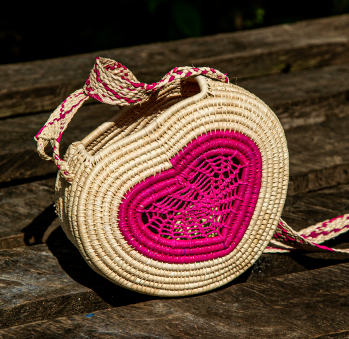
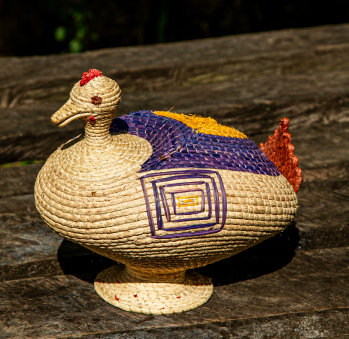

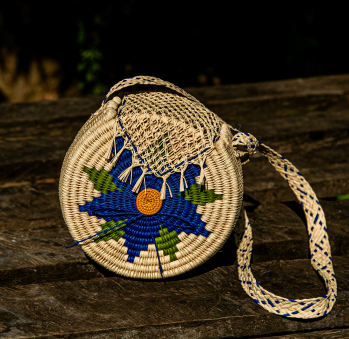
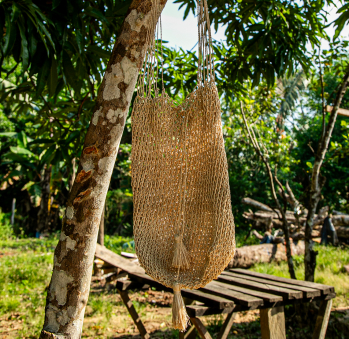
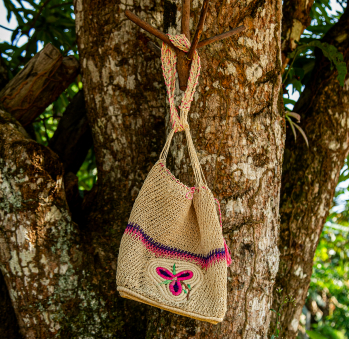
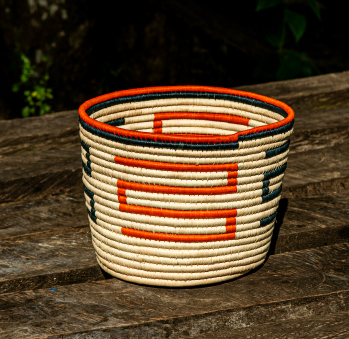












Artisans along the way
Artisans along the way
No puede copiar contenido de esta página








































